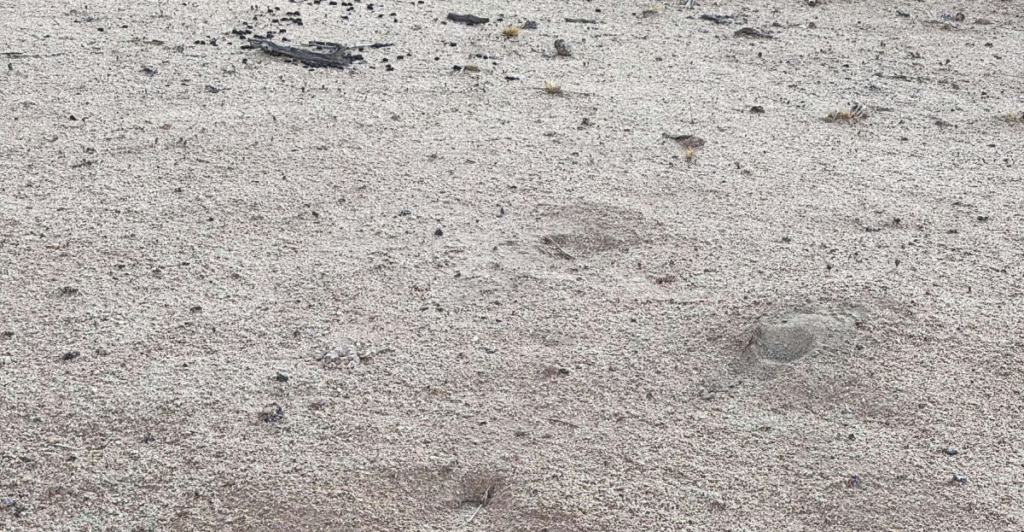
Snakes are amazing creatures that are known for their ability to vanish into their surroundings. Their camouflage serves two purposes: to protect them from predators and to let them ambush prey with precision. However, around the world, some snakes have evolved remarkable adaptations to blend into forests, deserts, swamps, and even underwater environments.
From vibrant patterns that look like foliage to textures that resemble rocks or mud, these reptiles are true masters of disguise. In this article, we will take a look at nine snakes that are exceptionally hard to spot, including their habitats, behaviors, and unique camouflage techniques.
1. Twig Snake
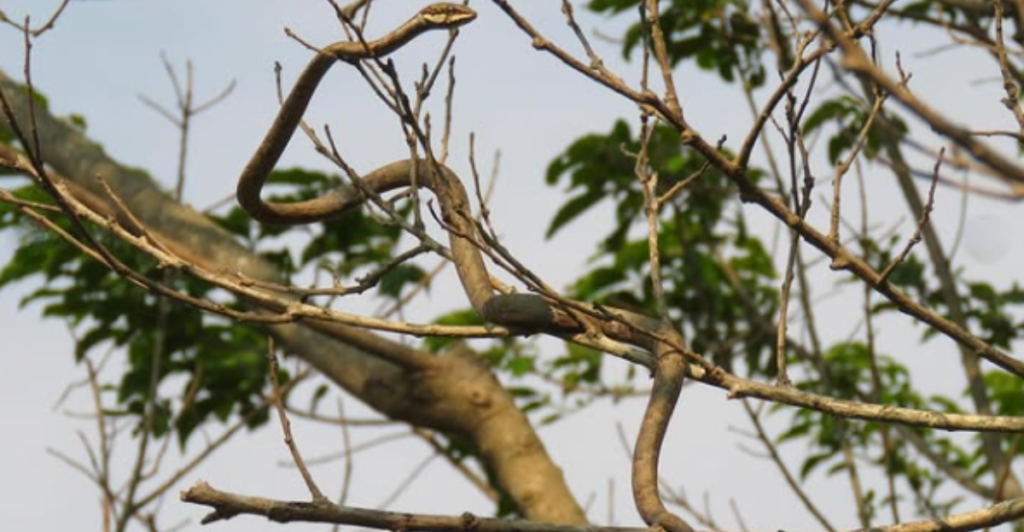
The twig snake is a venomous species found in southern Africa. It has evolved a remarkable ability to blend into its environment. This snake has a slender body and brown-green coloration that resembles twigs and branches, making it nearly impossible to spot when it is stationary. This snake is an arboreal predator, preying mainly on small lizards and rodents.
Its slow movements and thin body allow it to wait undetected for extended periods as it waits for prey. Even when it is spotted, it’s often mistaken for part of a tree or bush. This incredible camouflage helps it evade predators and gives it an advantage when ambushing prey, making it one of the hardest snakes to detect in the wild.
2. Spider-Tailed Horned Viper
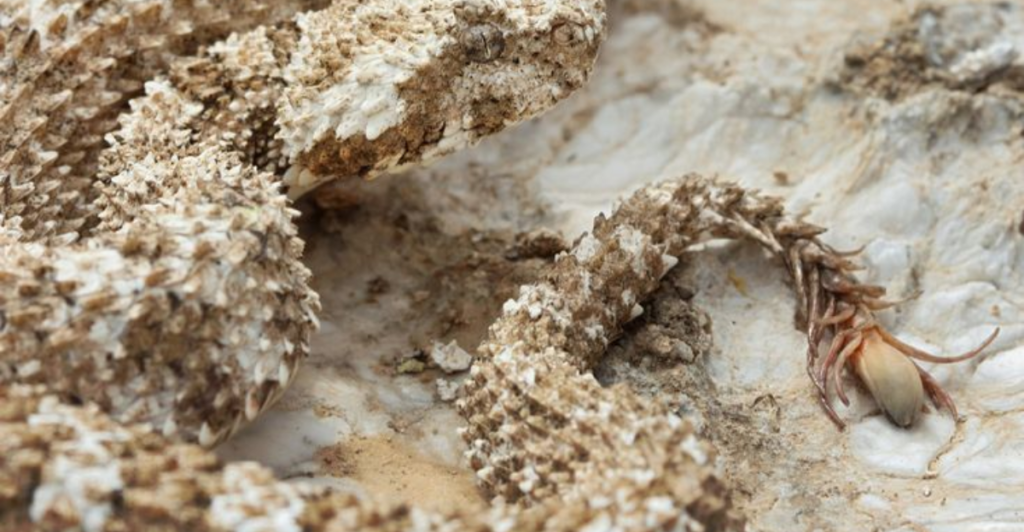
The spider-tailed horned viper, which is native to Iran, is a true master of mimicry. Its earthy body pattern allows it to seamlessly blend into rocky desert terrain, where it resides in arid regions with sparse vegetation. However, its most fascinating feature is its tail, which resembles a spider or insect.
It uses this unique appendage to lure birds into striking range by mimicking the movements of a spider. This combination of visual deception and strategic tail-wiggling makes it nearly impossible to detect until it strikes. Its camouflage is a perfect fit for its environment, allowing it to remain hidden while waiting for its prey.
3. Bushmaster
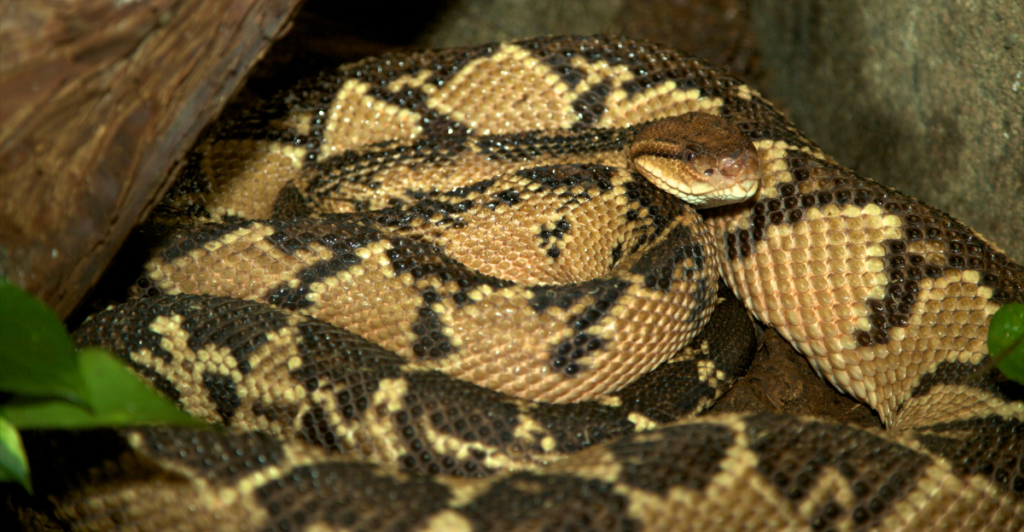
The bushmaster is the largest pit viper in America, and it is famous for its remarkable camouflage. These snakes can be found in the dense rainforests of South America. Its orange-brown coloration with dark geometric saddle markings makes it nearly indistinguishable from the forest floor. It’s nearly impossible to spot between fallen leaves and soil.
Sometimes, these snakes can exceed 10 feet, but despite their size, they are difficult to detect because of their shy nature and cryptic patterns. These snakes are primarily nocturnal and hunt at night, which makes them even harder to detect.
4. Emerald Tree Boa
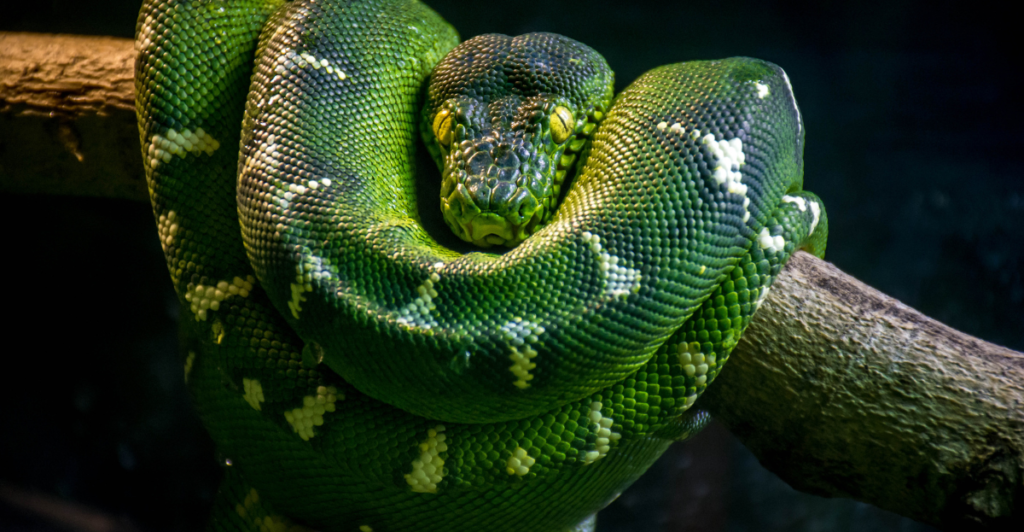
The emerald tree boa is one of the most visually stunning snakes in the world, and it can be found in the Amazon Basin of South America. Its vibrant green body, with white zigzag patterns, mimics sunlight filtering through dense foliage. This camouflage is perfect for an arboreal snake that spends most of its time coiled on tree branches, waiting for prey like birds or rodents to cross its path.
Despite being a bright, noticeable color, spotting these snakes in their natural habitat can be extremely difficult. Its coloration allows it to blend seamlessly into its surroundings, making it an elusive and hard-to-find species.
5. Garden Tree Boa
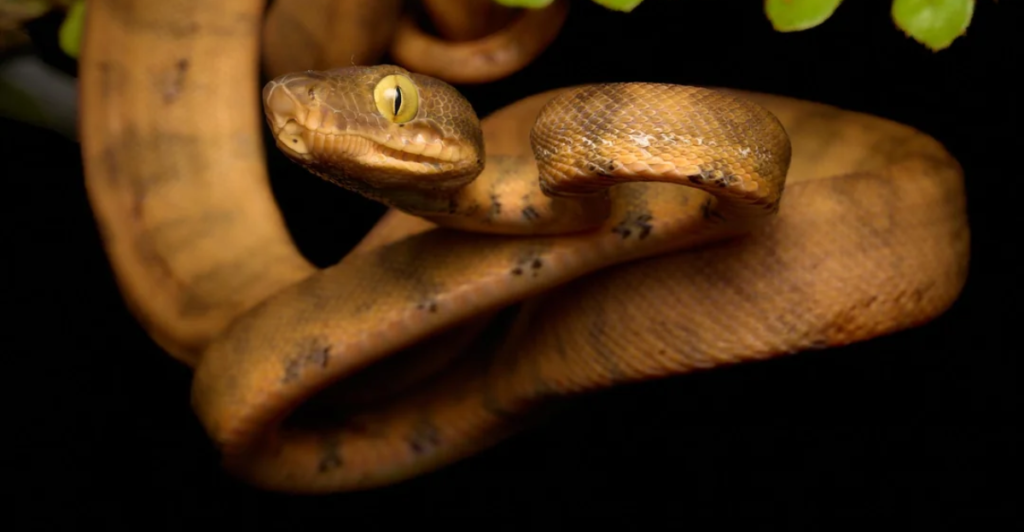
The garden tree boa is another arboreal species that can be found in South America. These snakes have a diverse range of color patterns that help it blend into their environment. From bright oranges and yellows to muted greens and browns, this snake adapts its camouflage depending on the specific habitat.
It moves quietly through the forest at night, hunting small mammals and birds. During the day, its colorations make it nearly impossible to detect among the branches and leaves it rests on. This snake’s natural camouflage allows it to remain hidden, protecting it from predators and increasing its chances of a successful hunt.
6. Rhinoceros Viper
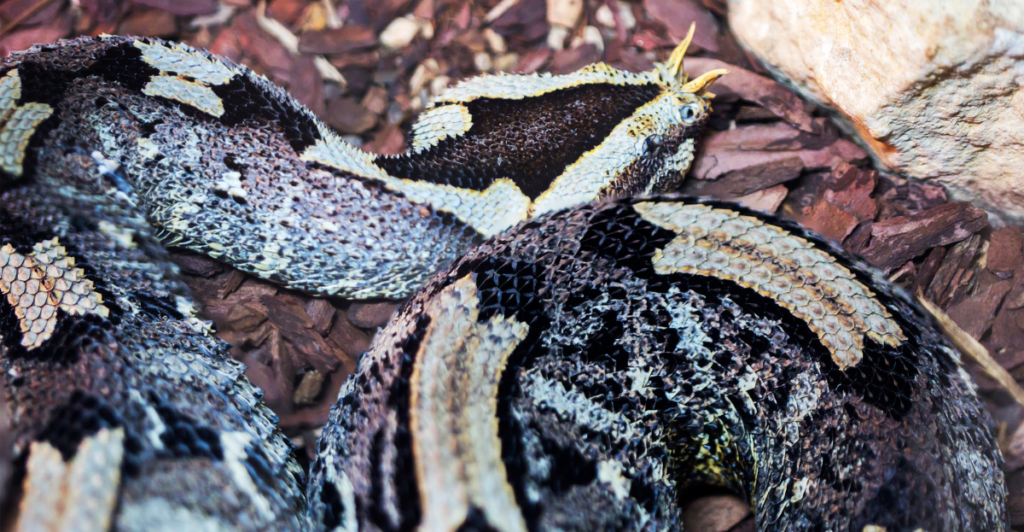
The rhinoceros viper is native to Africa and is an incredibly elusive species found in swamps and rainforests. It boasts a stunning pattern of blue, red, yellow, and black that breaks up its body outline and allows it to blend into the surrounding leaf litter and muddy terrain.
Although its striking colors should make it easy to detect, these snakes blend seamlessly into their surroundings, hiding them from predators and prey. The rhinoceros viper waits motionless for its prey, which makes it very hard to detect. These snakes feed on frogs, small mammals, and birds.
7. Worm Snake
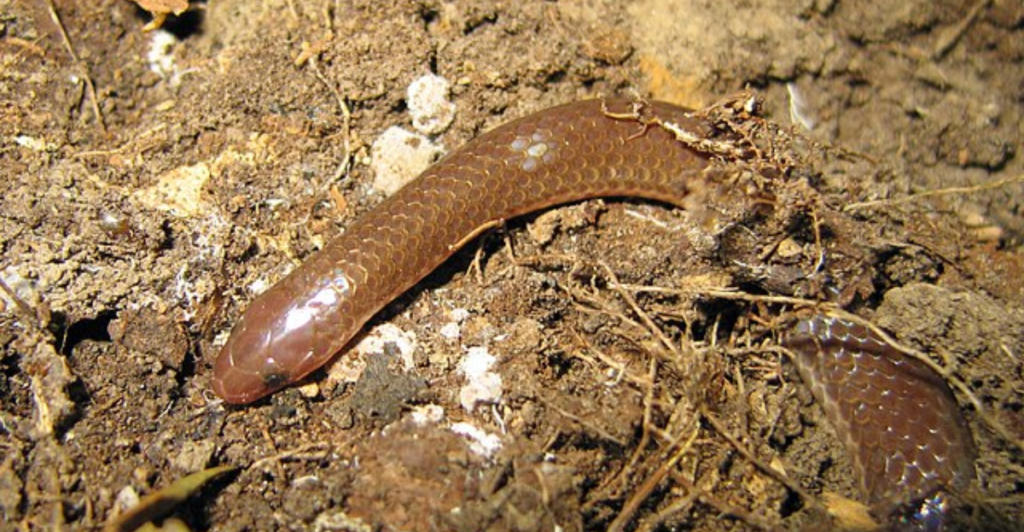
The worm snake is a small fossorial species that can be found across eastern North America. It has an extraordinary disguise. Its small size and pinkish-brown hue allow it to closely resemble an earthworm. Thanks to this resemblance, the worm snake often goes unnoticed by predators while it hunts for insects underground or among leaf litter.
This snake spends most of its life underground, but it occasionally surfaces in moist environments. Spotting this tiny snake above ground requires great attention to detail and impeccable timing. This snake’s camouflage is highly effective, helping it survive in environments full of potential threats while going largely unnoticed.
8. California Kingsnake
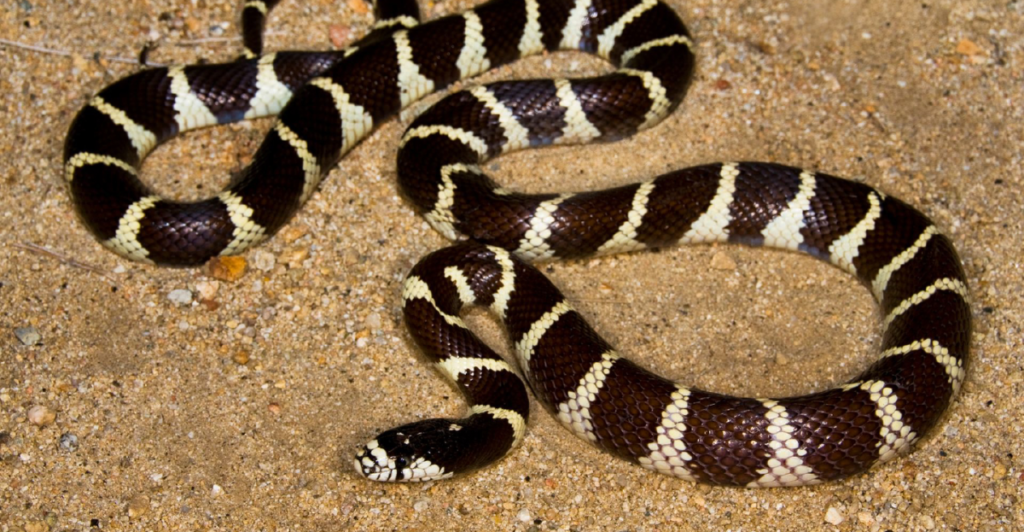
The California kingsnake is a nonvenomous snake that can be found throughout western North America. This snake thrives in a variety of habitats, from deserts to forests. Its striking black-and-white banding provides excellent camouflage against rocks, vegetation, and other natural textures.
The snake’s ability to blend into shadows and textured environments makes it an effective predator and a difficult target for predators. These snakes are active during the day and hunt small mammals, birds, and reptiles. Their black and white markings help them blend seamlessly into their surroundings, protecting them from predators while they hunt.
9. Tentacled Snake
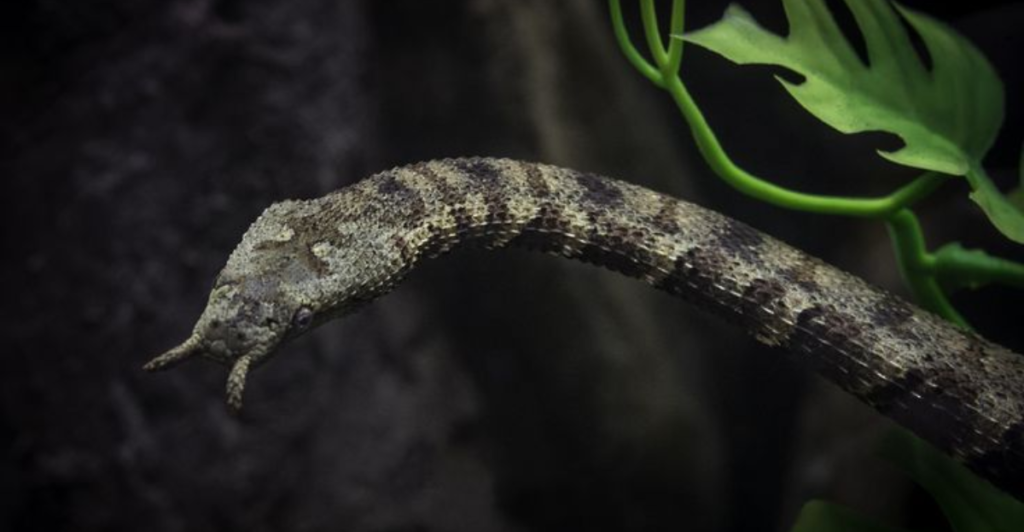
The tentacled snake, which is native to Southeast Asia, is a fully aquatic snake species with a remarkable ability to blend into underwater environments. Its textured skin closely resembles algae-covered plants, while its brown-gray coloration helps it blend with murky water conditions.
This snake often remains motionless between aquatic vegetation, waiting patiently for its prey. Its tentacle-like appendages, which are located near its nostrils, further add to its disguise by resembling aquatic plants. These snakes are very hard to spot because they look like just another part of the underwater landscape.
Explore more of our trending stories and hit Follow to keep them coming to your feed!

Don’t miss out on more stories like this! Hit the Follow button at the top of this article to stay updated with the latest news. Share your thoughts in the comments—we’d love to hear from you!







